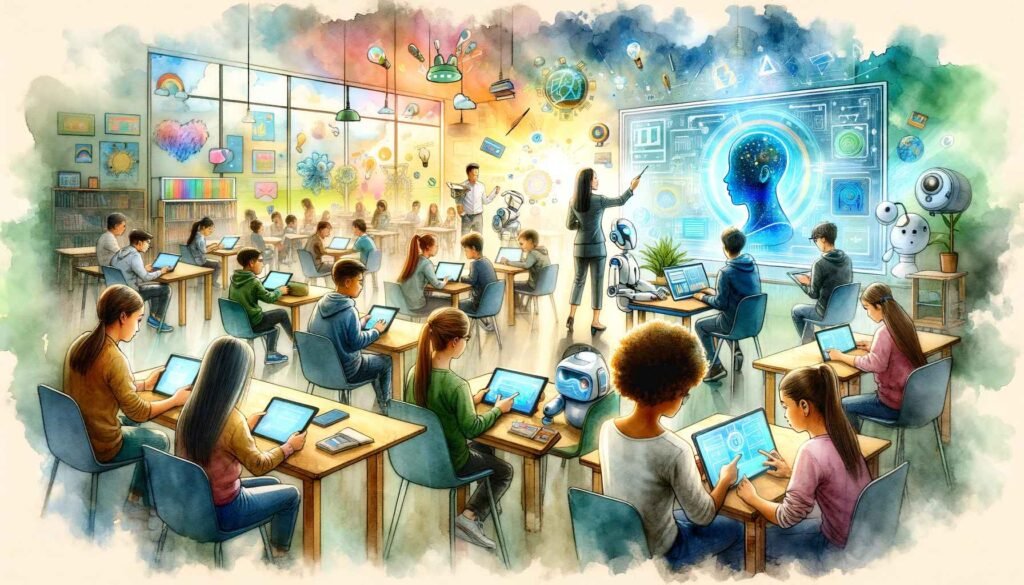
The World Economic Forum’s latest report, “Shaping the Future of Learning: The Role of AI in Education 4.0,” highlights the transformative potential of artificial intelligence (AI) in reshaping educational systems to better prepare students for the challenges of the future. As AI continues to influence various sectors, the realm of education stands on the brink of a significant evolution. This report presents a comprehensive analysis of how AI can enhance teaching effectiveness and learning outcomes, while also addressing the challenges posed by the integration of this technology in educational settings.
The report underscores the urgency of adapting educational systems to leverage AI’s capabilities. AI offers unique opportunities to personalise learning experiences, streamline administrative processes, and equip students with the essential skills needed for a technology-driven future. Moreover, AI can relieve educators from mundane tasks, allowing them to focus more on engaging directly with students and fostering a more interactive learning environment.
However, the deployment of AI in education is not without challenges. Issues such as data privacy, the risk of widening educational inequalities, and the need for significant teacher training are highlighted as areas requiring careful consideration and strategic action.
Recommendations for Teachers and School Leaders
1. Professional Development in AI: Teachers need to be equipped with the knowledge and skills to use AI tools effectively. Professional development programs should include training on AI technologies, with a focus on how these can be integrated into the classroom to enhance teaching and learning.
2. Incorporating AI Literacy into Curricula: As AI becomes more pervasive, students must be educated on its implications, including ethical considerations and data privacy. Schools should integrate AI literacy into their curricula, ensuring that students are both savvy users and critical consumers of this technology.
3. Leveraging AI for Personalised Learning: AI can help tailor educational content to meet the individual needs of students. Teachers and school leaders should explore AI-driven platforms that provide personalised learning paths, which could help improve student engagement and academic outcomes.
4. Enhancing Administrative Efficiency: AI can automate many administrative tasks, such as attendance taking, grading, and scheduling. School leaders should invest in AI systems that streamline these processes, thereby allowing teachers to devote more time to instructional activities.
5. Promoting Equitable Access to AI Resources: To prevent disparities in educational quality and access, school leaders should ensure that AI tools and resources are equitably distributed across all students, regardless of socioeconomic background. This includes providing necessary hardware, software, and internet access.
6. Fostering a Collaborative Environment: The integration of AI should not be isolated within tech-savvy classrooms alone. Schools should foster a collaborative environment where educators can share insights, strategies, and best practices for using AI effectively.
The report from the World Economic Forum provides valuable insights into the role of AI in shaping future educational paradigms. By taking proactive steps to integrate AI into teaching and learning processes, educators can enhance the educational experience and better prepare students for the challenges of the future. As we navigate this transition, it is crucial for teachers and school leaders to actively participate in shaping the educational technologies that will define the next generation of learning.
Leave a Reply